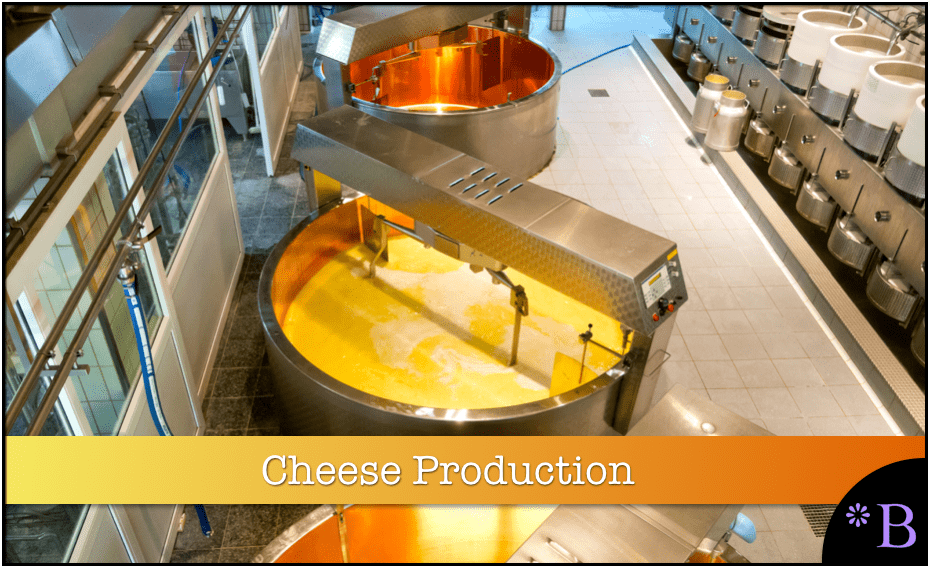How to Grade Your Production Scheduling System
Executive Summary
- Companies generally don’t know what their production scheduling systems should be able to do.
- We explain how to grade your production scheduling system against essential criteria.

Introduction
Production scheduling software will never be considered the sexy category of enterprise software. That may be hard for people who work in this area to read; however, Gartner will never write an article describing the differences between production scheduling software applications and why they are important.
Our References for This Article
If you want to see our references for this article and related Brightwork articles, visit this link.
And really, why write about production scheduling software when you can write about next-level analytics or CRM systems that will explode the pipeline! If you are an analyst firm, you need to keep your eye on marketability and write on hot topics.
It all reminds me of a quotation from the movie 13 Days. The actor playing Adalei Stephenson (The US Ambassador to the UN) has to bring up an unpopular topic related to trading US missiles in Turkey for Russian missiles in Cuba. To introduce the subject, he states to JFK and his group of advisors:
“Maybe someone in this room should be a coward, so I guess I will be.”
I suppose in that vein, someone has to risk talking about unsexy software categories, so it might as well be me.
Why Production Planning and Production Schedule’s Emphasis is so Low
While an unsexy enterprise software category, production scheduling is the heart of the decision-making that manages to manufacture. Production scheduling determines what products will be made, when they will be done, and the work to be performed in the overall factory. This article will explain why production scheduling is more important as a software category than possibly ever before.
However, before we get into the details, let us cover what I mean by a “system” to all be on the same page on terminology. So since I am talking about explicitly grading a system, what is meant by this term?
Production Scheduling Software Definition
Production Scheduling Software is whatever logic makes the production and scheduling process go.
I am using the term Production Scheduling Software very generally to refer to the software that supports the production scheduling process. This is whatever is used.
There can be some confusion here because spreadsheets can have sophisticated optimizer add-ins, which can be used to develop custom solutions (Excel comes with an optimizer, but you can buy much better and more powerful optimizers to be used with Excel). However, in most cases, this not what companies use, so this is not what I mean when I refer to spreadsheet scheduling in this article.
Whatever is employed by a company for production scheduling, then it is, by my definition, the Production Scheduling Software that is to be graded.
Is ERP + a Spreadsheet Your Production Scheduling Software?
In this previous article titled Why Do Companies Continue to Use ERP/MRP Systems for Production Scheduling?, I explained the reason so many companies score poorly in their production scheduling is due to the fact they use a combination of ERP and spreadsheets as their “system.” This is a significant error in understanding what production scheduling requires (in most instances)
That Wasn’t Supposed to Happen!
It turns out that companies often start off thinking they can use ERP systems because of the combined fact that they were initially told they could, and secondly because, at many companies, production scheduling efficiency is not a high priority (see above statements regarding the relatively low profile of this software category.)
Once the combination of ERP + spreadsheet is used, inertia sets in. There can often be a reticence to move to something more appropriate and more capable, like full production scheduling software.
It’s hard to pinpoint all the reasons for this, as they shift depending upon the company in question, but a few things can be said. I have seen and others I have spoken to have seen a general underestimation of how difficult it is to schedule most production environments with essential tools effectively.
Ouch that Hurt
I appreciate this because I have tried scheduling production scheduling environments myself, using the same tools that were in use by my clients. I did very poorly.
So that gives you an appreciation for the nature of the problem, and if it were me, I would be looking for all the production scheduling software I could get. And I would not want to entertain production scheduling software from software generalists like SAP, Oracle, or IBM that have no history of making production scheduling software a focus. Again, these vendors’ applications cannot create an effective production schedule even one time, much less adjust the production schedule.
Secondly, another big part of the problem is due to the illusion that the ERP system is adding much more to the process than it actually is. Let us get into this topic briefly because it’s foundational to understanding how so many companies ended up with the production scheduling systems that they have today.
One System to Rule Them All?
ERP is simply an extensive footprint application that provides many functionality areas under one “roof.” It always needs other systems to do work in specific areas. Spreadsheets and customization are performed when the ERP system cannot meet the business requirements. It is still amusing to hear that an ERP system can meet some requirements as long as there can be some customization. If customization is written, then the application is not meeting the requirement, and one is at that point on par with using an external application. This apparent mind trick has worked on many people over the years.
Companies that sold this vision of exclusively using the ERP system had to back so far off of this concept that the modern interpretation and usage of ERP systems is unrecognizable from the original presentation of ERP. I extensively researched this topic and have a book on it called The Real Story Behind ERP, but the short version of the short, many people who made predictions about ERP owe ERP buyers a big apology.
Incorrect Assumptions
Since ERP systems were first introduced and until the present time, most ERP vendors have proposed that ERP (and the MRP method contained within) was a satisfactory approach for performing production planning and scheduling. The only ERP vendors, who currently do not propose this, are the ERP vendors that also happen to have production planning/scheduling applications to sell — and they only started saying this after adding this category of application to their portfolio. Until that time, they said ERP could do production scheduling.
I can say quite confidently that except in rare circumstances, which I will describe further, ERP (often with help from Excel) for production scheduling is not a satisfactory approach. Instead, it is merely what evolved – or was a fallback after the promises made by ERP vendors regarding their ability to support production were found not to be accurate.
The Value Proposition of Production Scheduling Logic
- Let us get into the detail of what production scheduling logic is — even at just a high level — and then compare that to what an ERP system can do.
- I will do this without getting into the exact way that production scheduling logic can work (which would require some articles to cover the significant methods put into practice by off-the-shelf and custom applications.)
Production Scheduling Sofware Logic Conceptually and Adjusting the Production Schedule
Production scheduling software logic allows a company to take the production plan produced by MRP or a more complicated method and take it to the next level of detail. Production scheduling software deals in exquisite detail and at the minute and second of time increments. This produces a production schedule in great detail. One of the essential features, however, is to be able to adjust the production schedule. Therefore one of the requirements of production scheduling software is adjusting the production schedule exceptionally quickly. That means that the performance needs to be there in the application. ERP cannot create a production schedule in enough detail, and MRP systems lack the performance to adjust the production schedule as is really required.
MRP is a method of both supply and production planning. MRP and similar methods only produce a plan, which allocates a planned production order to a day. Using some capacity restricted (and there are several ways of doing this), then the job is to present a production plan to a roughly feasible production schedule (that means achievable by the plant every week).
However, everything after this point is where the production planning process stops. We now move into production scheduling. This distinction is a critical part of any executive decision-maker to understand.
The Next Layer Down
So, MRP takes the original view or demand/requirements and capacity and then create the plan. Next, it requires help from another grouping of logic to schedule the production. One important thing to consider is that MRP is not exclusively focused on manufacturing. Yes, that is right, as another big part of MRP is procurement — either for the product to be used for resale or to support production.
In fact, and this is why many people who make decisions critical to this area may not know, MRP only deals with manufacturing at an abstract level — that is when to schedule production orders and purchase orders. This has several important implications for any “system” that is used to perform production scheduling. This system should have the following:
- More Time Granularity
- A Production Scheduling Specific Processing Capability
- A Production Scheduling Specific User Interface (more detailed)
- A More Realism or Accurate Model of the Production Environment (an excellent example of this is the detail included in the resources.)
Detailed Time Scheduling
Of all the supply chain planning application categories, detailed scheduling has the most granularity in timing. Along with timing considerations, here are some essential characteristics of this application category.
- Timing: Detailed scheduling applications have the ability to schedule to the hour and the minute.
- Update Frequency: This application category can be continually rerun (depending upon the procedure used, the hardware, the problem size, etc..) and will continuously update the production schedule. We will see a little further why this capability is becoming more critical due to the changes in how Marketing and Sales operate.
Detailed Scheduling + MRP?
Now up to this point, I have described MRP as a process that is put in front of the detailed scheduling process. And that is true, but it is not exclusively right. This is because some of the production scheduling applications can also run MRP so that the procurement/material implications can be seen within the application, which is far more detailed and useful (for this purpose) than any ERP system.
In this case, the application will tend to run MRP quite frequently when the MRP/ERP system is integrated correctly into the detailed scheduling system to the production schedule. The changes to the production schedule are then fed back to the MRP/ERP system, making adjustments — although the modifications are at a higher level of aggregation.
So, the production planning performed in the ERP system merely sets up the production scheduling system to go to work. And it does not just need a “little help” from the production scheduling system. The production scheduling system is far more complicated than what ERP MRP run is doing.

Making Cheese
There is a powerful tendency to oversimplify and unify manufacturing environments conceptually. For whatever reason, when many people think of manufacturing, they think of a discrete production line. However, there is so much variety in manufacturing. This is cheese being mixed. Mixing operations are their specific type of scheduling problem (and they can be simple or complex).

PetroChemicals
This is an oil refinery. The production scheduling is so specific for the petrochemical industry that it is mostly dominated by a single software vendor that only focuses on developing solutions for this industry.
And considering the variety of manufacturing environments, it gets to the next topic of this article, which is the all-important matching process between system selection/development and the specific requirements.
How Does Your Production Scheduling System Match The Production Requirements?
There is a crucial matching process that must be performed first to connect the right type of solution to the needs. One of the critical distinctions is based upon the scheduling problem’s complexity, which I break into low complexity, medium complexity, and complex or custom.
- Low Complexity: Production scheduling environments that are simple enough to be managed in a spreadsheet. I have done this myself, creating a spreadsheet for paint mixing that can sort a sequence of production jobs based upon cost and change over time. However, this is only for simple things, and who knows what else I could have considered, but I didn’t because my tool was so simple. Few manufacturing environments are so simple that they can be effectively scheduled this way.
- Medium Complexity: Production scheduling environments that are sophisticated enough but not so specialized so that they are a fit for packaged solutions.
- Complex/Custom: Production scheduling environments that are so complex and custom that they either require highly customized packaged solutions specifically designed for the problem or need custom-developed software. This custom software can be developed in-house, but software vendors have a framework that can be adjusted per company, so they don’t start from scratch each time. These types of businesses tend to be stronger in some industries than others.
Knowing Where You Are on the Production Scheduling Decision Tree
I recently had a consultant reach out to me regarding the benefits of using a production scheduling system in a chaotic environment. At the end of one of his correspondences, he asked.
(In this case) Is there really a benefit to using production-scheduling application?
This consultant started by asking me if I could recommend a packaged production scheduling application.
What Node of the Decision Tree Again?
The questions that he was asking had multiple facets to them, and in fact, his company was, in my opinion, further “up” the decision tree — which, from what I could see, is at the “first node.”
The following seems to apply to the first node of decision-making.
- It is a standard packaged solution, right?
- Is Excel with some solver plug in the right?
- Is it a lightweight application, right?
- Is it a custom solution, right?
This is about moving backward from the best approach’s requirements first, then worrying about the second node after the first node is determined. The decision branch currently is what application or what solver or what lightweight application or custom solution.
Because of the specific types of requirements that he had with his client, it is essential not to move down to the second decision branch yet and stay up at the first node until this first question had been answered.
Scheduling “Chaos?”
Due to actions primarily on the part of Marketing and Sales, production scheduling is increasingly chaotic. It is always amusing to hear about “demand shaping,” where Marketing and Sales adjust the incentives to smooth demand. Where is this happening outside of discussions at conferences? Just the opposite is now the most common approach. I will get into this in detail in a future article. Still, pandemonium is the new normal in manufacturing, and this entire topic is far less acknowledged than it really should be.
Conclusion
So the question is, if your company was evaluated, how well do you think they would do in how “good” the production scheduling system is?
- Is it flexible? How long does it take to adjust the overall schedule after a new order is dropped in? Is it clear what happens to the other orders when this happens?
- Can your system account for setup times? Can it arrange the planned production orders to account for these setup times?
- Does the solution help Sales? This is a derivative of the “what if a new planned production order” is added — but it is a simulation, as the order has not yet been added.
- Can your system help with planning scenarios?
- Does it meet the business requirements of manufacturing operations?
- Is it the right type of solution?
- How closely does production follow the schedule after it is firmed?
- That is, if the manufacturing environment is reasonably complex, is packaged production scheduling software used?
- If packages scheduling software used — is it a match for whether the manufacturing is discrete, repetitive, process or batch?
- Is it easy to use, or at least relatively easy to use?
- Do production schedulers praise it or complain about it?
I hope this article has at least demonstrated that it is important to find out the answers to these questions.
User Warning
This article does not mean that I propose just any production scheduling solution.
- No decision regarding a software vendor can be determined before the earlier question is answered — because packaged solutions are not right for many detailed scheduling environments.
- There are plenty of inappropriate production scheduling applications that won’t help the company’s situation anywhere near and others. Furthermore, with the number of poorly selected production scheduling applications I have seen implemented, it is not a simple matter of getting the right one.